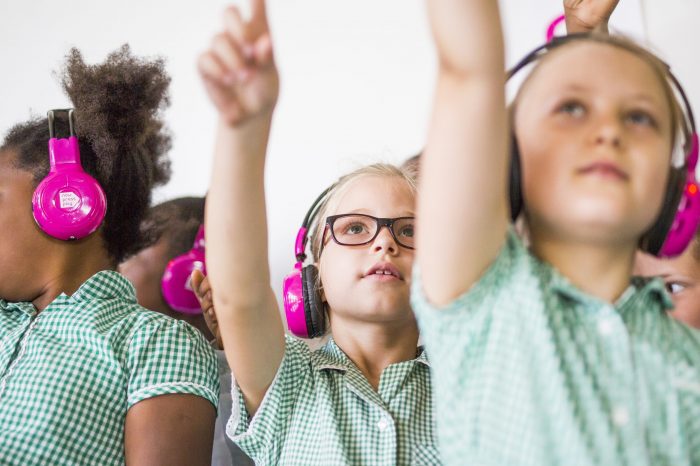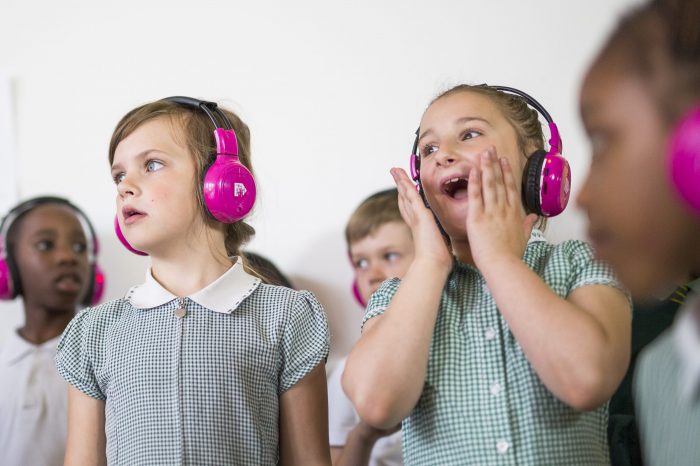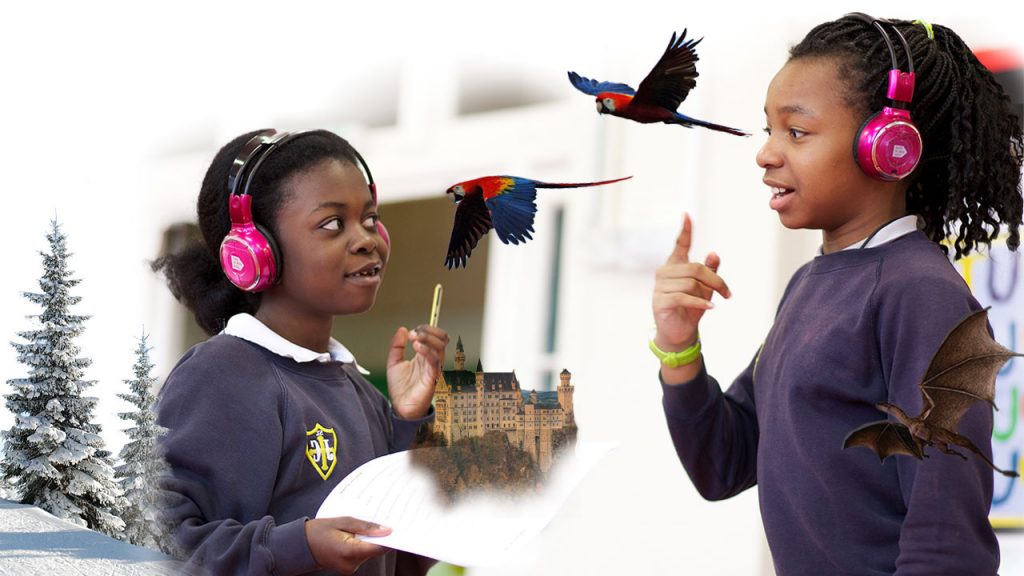
Sam Ashman is a Year 3 teacher at Front Lawn Primary Academy in Havant, and coordinates the use of now>press>play from EYFS all the way to Year 6. Experiences and follow-on resources are mapped to a range of subjects such as History, Geography, Languages, PSHE and Maths, helping children learn key skills and topic vocabulary.
Miss Ashman coordinates now>press>play usage across the school and encourages teachers to use it at least once every half term. She comments that now>press>play can be used quite flexibly at different stages of the topic:
Sometimes we use it as a launch, sometimes we do it halfway through, and sometimes we do it at the end as our fab finisher. It's nice to end on a now>press>play because they know all that language from before. We're very much still playing around with it. But I think it lends itself nicely to all three really.
Sam Ashman, Year 3 teacher, Front Lawn Primary Academy
Miss Ashman explains that now>press> play naturally links with their whole school use of Talk For Writing, Pie Corbett’s innovative approach which immerses children in their writing through mapping stories in pictures and using actions. The school’s Headteacher expressly subscribed to now>press>play to complement the Talk for Writing initiative.
Sometimes Miss Ashman uses now>press>play outside with her Year 3 children if it suits a curriculum area, such as Geography, as it helps to trigger their imagination.
If a topic is naturally an outdoors one, it feels right to be outdoors if we can. I say, “Let's get outside to do this one because that's what a geographer would do.” It's just putting them into a different perspective. And they do very much treat it differently when they are outside, I think their imaginations are even better.
Sam Ashman, Year 3 teacher, Front Lawn Primary Academy
How the school uses now>press>play’s follow-on resources for vocabulary and more
A number of teachers across the school use the now>press>play follow-on resources after an Experience, with storyboards and quizzes proving to be the most popular. Miss Ashman explains that doing a storyboard after an Experience helps children to understand the story, retain what they have learned and remember how they felt during the Experience.
I’ll say, “here's a storyboard, tell your partner everything you did in that story the day before.” It's just retention and that idea of comprehension — actually, I was following a storyline, and I was following the actions and I was following emotions of the characters and I know that there was a big problem in the middle and that's how I solved it, and there were facts that I learnt as I went along.
Sam Ashman, Year 3 teacher, Front Lawn Primary Academy

Miss Ashman also uses the now>press>play key vocabulary sheets before an Experience to introduce the topic’s vocabulary and explain any words that children might not understand.
I do put the vocab list up first if I can, to go through all of that and then I can see who struggled with that language before I do it, that's my pre-assessment.
Sam Ashman, Year 3 teacher, Front Lawn Primary Academy
Using resources has been even easier for teachers since now>press>play developed the app for use on personal devices.
Now, with the new app that I've got on my own personal device and our class iPad, it's even better, because you can email them to yourself and print them if you need them printed or have them up on the screen within minutes.
Sam Ashman, Year 3 teacher, Front Lawn Primary Academy
Where has now>press>play made most impact?
Miss Ashman describes how now>press>play is different because it really is inclusive for all children. This is because the Experience is immersive, doesn’t involve writing and provides an opportunity to learn through play.
They're not faced with a blank piece of paper and a pencil. They are faced with, “Oh I can use my body to do this, I can use my expression and I can act it out.” Some of my children still very much need to learn through exploring and play, and that's what it is essentially.
Sam Ashman, Year 3 teacher, Front Lawn Primary Academy
Miss Ashman describes how now>press>play enables children to shine who might normally “take a back seat” in lessons. She gives the example of a pupil with low-self-esteem and behavioural issues who takes the lead during now>press>play Experiences and whom other children then follow. now>press>play also helps pupils to improve their vocabulary, both spoken and written:
I've noticed that they'll sometimes use the language from the now>press>play either in their writing or in their conversation. And I think, “Oh I wouldn't have used that turn of phrase,” and because I've listened to it myself, I can understand where that came from.
Sam Ashman, Year 3 teacher, Front Lawn Primary Academy

From a teacher’s perspective
For teachers at Front Lawn Primary Academy, the main benefit of now>press>play is the part it plays in launching topics in an engaging way and being a point of reference for further discussion about the topic. It’s also timesaving for teachers and can be used spontaneously or at short notice as it’s easy to use.
I've done it before, where I think, “Actually, let's get it out today.” I wasn't planning to, but it's one of those things that I can just grab and it's comprehensive. I don't have to think. It's all there for me.
Sam Ashman, Year 3 teacher, Front Lawn Primary Academy
This case study was created for our 2022 Product Impact Report — check out the full report and its key findings here. Many thanks to Front Lawn Primary Academy for sharing how our resources have helped support their children’s vocabulary across the curriculum.
Read more:
